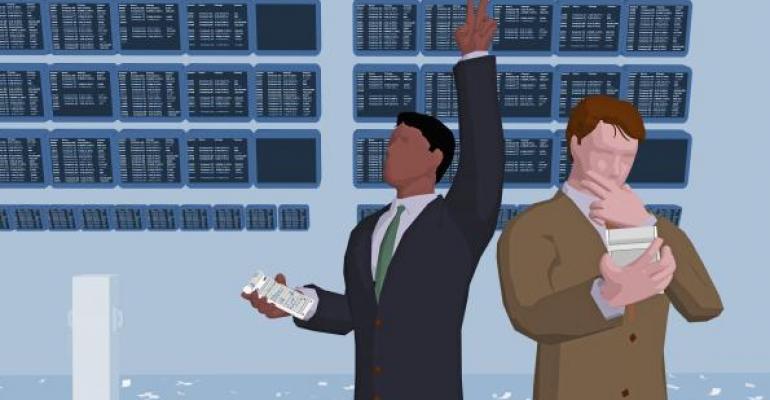The parable of the boiled frog is one of the great metaphors on human behavior and risk. The story goes that if you place a frog into a pot of boiling water it will leap out; equating the high temperature with risk. The story continues that if the pot is filled with cool water and gradually heated to a boil the frog will remain in the pot, not detecting the threat until it is too late. The frog's survival instincts are honed to detect and respond to immediate risks and sudden changes; risks that are of a subtle or gradual nature are largely ignored or written off as normal.
The boiled frog story reminds us that risk is everywhere, and that we need to be sensitive to change even of a gradual nature lest we suffer the fate of the frog. Applying this metaphor to an investment context and current events, the gradual shifts in FOMC policy are slowly changing the temperature in the pot. With each successive reduction in stimulus the level of risk in the market increases. The challenge facing the Federal Open Market Committee is if it acts too fast investors will leap from the pot. Conversely, if it acts too slowly the level of risk in the market will continue to build as investors stay acclimated to the low-yield environment, likely facing similar results as the poor frog.
Both the market and the FOMC are coming to the realization that there is no easy exit from the current zero interest rate policy. As reported by The Wall Street Journal on Friday, there are a growing number of Federal Reserve officials who want to move further away from the forward guidance on interest rates. The FOMC has used the “extended period” language to placate the market and assuage any fears that rate hikes were imminent. From investors’ perspectives the successive reductions in the FOMC’s monthly purchases have been largely offset by the use of this language, keeping them in the “pot” – or in this case the market.
At the conclusion of next week’s FOMC policy meeting, all eyes will be on the statement. The removal of the “considerable time” language would clearly signal a more aggressive set of rate increases fairly soon. The selloff in rates this week indicates that investors are becoming increasingly concerned about this. Long Treasuries were the worst performer this week as rates rose in excess of 10 basis points. In looking at the last four weeks, 10-year Treasuries rates have risen by 30 basis points as investors have continued to shed duration tied to the uncertainty around the forward path of rates.
It is my view that the FOMC will not remove the “considerable time” language so as to avoid sending a message about imminent, aggressive rate increases -- the “boiling pot” scenario. While many on the FOMC have suggested October might be a good time to make a change, this messaging could easily stretch into the December meeting with little to no impact to the policy agenda. Also, October is when the bond-buying program referenced in the interest rate guidance ends.
The curve finished on Friday with a steepening on the front end and flattening on the back. The spread between 2-year and 10-year Treasuries increased by 8 basis points, finishing the week at 203 basis points. I had been looking for this relationship to steepen and I believe we will find resistance in the 205-210 basis point area. Out the curve, the spread between the 10-year and 30-year rates flattened by 3 basis points as the 10-year lagged by the differential. The steepening on the front end of the curve has increased the slope, pushing some relationships to their widest levels in 3 months. The slope between 2-year and 3-year rates is now sitting at 51 basis points, creating one of the steepest points along the curve.
Global sovereign rates pushed higher this week as tier one countries saw rates rise by 12 to 15 basis points while peripheral countries saw rates rise much more; 25 basis points in the case of Spain. Succession fears tied to Scotland and Catalonia weighed on trading, pushing rates higher. Trading on Thursday and Friday was clearly impacted by the tone in U.S. rates. German Bunds sold off by 13 basis points, this week hitting 1.08%. The spread between U.S. and German 10-year rates now sits at 152 basis points. Global credit spreads finished trading on Friday slightly weaker, with most sectors seeing a widening of 2-3 basis points.
As we head into next week, the level of risk in the market is clearly changing and likely increasing, as seen by leverage, spreads, rising yields, and marginal liquidity. Realistically, the Fed is unlikely to make any drastic shifts in its policy timeline as acting too aggressively would likely elicit an adverse reaction from the market. To date the FOMC has gone out of its way to avoid moving too quickly, but as an investor you must consider the possibility.
If investors are to learn from the parable of the boiling frog, we must be aware of the shifting level of risk and price liquidity accordingly. The good news is that according to contemporary biologists the premise of the frog story is not true: A study in 2002 by a zoologist showed that when the water was heated the frog did in fact leap from the container. In the end things apparently worked out for the frog in the same way they will for investors who understand their surroundings.
Sean Fallon, CFA, is Senior Vice President of Stephens Inc. He joined Stephens in July 2012 to head the Municipal Taxable efforts and to trade CMBS, Agency CMBS, and ABS. He has 19 years of experience managing and trading fixed income assets.





